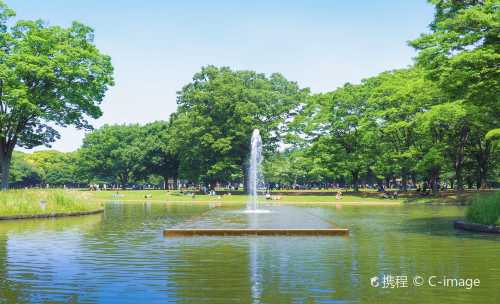App
Customer Support
Find Bookings
Popular Trip Moments
A Guide to Enjoying Tokyo in the Height of Summer! | Park Hyatt Seoul | [Jiyugaoka] The ultimate power spot to calm your mind ⛩ Kumano Shrine | Tokyo Neighbourhood Guide: Hidden Corners & Local Favourites | Narai Juku | High Value Tokyo Itinerary - Day 3 | [Tokyo/Yushima] A unique sushi restaurant where you can enjoy the owner's conversation 🍣 | Shibuya in Summer: A Lively Vibe! 🇯🇵☀️ | Sangenjaya: A Tranquil Escape Near Shibuya 🇯🇵🚶♀️ | [Tokyo/Nakano] If you like garlic, you must go! 🧄Garlic Bar🩵 | Shopping guide 🧳🎁Japanese Hello Kitty shopping guide sharing with address🛍🎀 | 🌸A green miracle in the city! Shinjuku Gyoen is a secret garden in Tokyo that is beautiful in all seasons. Enjoy cherry blossoms, escape the heat, and heal your soul all at once🍁🌿 | The Intersection of History and Nature—Reflections on Visiting Nijubashi | A Michelin-starred ramen restaurant that you can’t miss: Iruka | 1 day itinerary-TOKYO🇯🇵 | The Westin Tokyo Le Spa Parisien: A luxury hotel spa with great value for money | SensojiSummer: Tokyo’s Coolest Temple Adventure Awaits! ⛩️✨ | EDITION Hotels + The Jade Room | Hydrangeas in Tokyo Odaiba | A Master Craftsman with 50 Years of Experience in Kamata Cold Noodles | [Tokyo] Popular cafes in Okutama you'll want to visit this summer ☕🌿 | Unmatched Skyline Views: Immersive Experience at Takanawa Hanakohro Infinity Pool | Unparalleled Skyline Views: Infinity Pool Experience at Tokyo Toranomon Edition Hotel | Unparalleled Skyline Views: Experience the Rooftop Pool at Andaz Tokyo Toranomon Hills | Luxurious High-Rise Experience: Infinity Pool at Mandarin Oriental Tokyo | **【Unparalleled views from high altitude】Infinity pool experience at Conrad Tokyo** | Unparalleled Views: Infinity Pool Experience at The Capitol Hotel Tokyu | Experience the Ultimate Skyline View at Grand Hyatt Tokyo's Infinity Pool | Ultimate High-altitude Indulgence: Infinity Pool Experience at MESM Tokyo, Autograph Collection | The ultimate high-altitude enjoyment】Infinity pool experience at the Prince Gallery Tokyo Kioicho, a Luxury Collection Hotel**
Recommended Attractions at Popular Destinations
Attraction near Bangkok | Attraction near Manila | Attraction near Tokyo | Attraction near Taipei | Attraction near Hong Kong | Attraction near Seoul | Attraction near Kuala Lumpur | Attraction near Los Angeles | Attraction near Shanghai | Attraction near New York | Attraction near Shenzhen | Attraction near Osaka | Attraction near Singapore | Attraction near London | Attraction near Guangzhou | Attraction near San Francisco | Attraction near Beijing | Attraction near Macau | Attraction near Bali | Attraction near Jakarta | Attraction near Paris | Attraction near Ho Chi Minh City | Attraction near Istanbul | Attraction near Phuket | Attraction near Chicago | Attraction near Seattle | Attraction near Toronto | Attraction near Orlando | Attraction near Cebu | Attraction near Chiang Mai
Popular Restaurants in Tokyo
Beige Alain Ducasse Tokyo | Restaurant Ryuzu | Hommage | ZURRIOLA | Ginza Koju | RyuGin | L'OSIER | Azabu Kadowaki | Ningyocho Imahan | Matsukawa | Ginza Shinohara | Sushi no Midori | Florilège | Quintessence | Seryna | Den | Sushi no Midori | Sushi Arai | Esquisse | Narisawa | Hiyama | Ginza Ibuki | L'Effervescence | Aman Tokyo Arva Italian Restaurant | Sushi Nakamura | Yakiniku Champion | Goryu Kubo | Kitafuku (Ginza) | Dominique Bouchet Tokyo | Sky Grill Buffet Musashi
Popular Ranked Lists
Popular Must-Visit Restaurants in Dubai | Popular Luxury Hotels Near Tonosho | Popular Luxury Hotels Near Lazaro Cardenas Municipality | Popular Must-Visit Restaurants in Langkawi | Popular Luxury Hotels Near Century City | Top 9 Best Things to Do in Sanming | Popular Best Things to Do in Liancheng | Popular Luxury Hotels Near Fishers | Popular Must-Visit Restaurants in Bangkok | Popular Premium Hotels Near Kinshasa | Popular Must-Visit Restaurants in Madrid | Popular Luxury Hotels Near Montelimar | Top 4 Best Things to Do in Wenling | Popular Luxury Hotels Near Chichibu | Top 5 Best Things to Do in Luzhou | Popular Luxury Hotels in Al Ula | Popular Must-Visit Restaurants in Koh Samui | Popular Best Things to Do in Langfang | Popular Premium Hotels Near Dearborn | Popular Best Things to Do in Linhai | Popular Luxury Hotels Near Owani | Popular Must-Visit Restaurants in Osaka | Top 3 Best Things to Do in Fuding | Top 3 Best Things to Do in Chuxiong Prefecture | Popular Best Things to Do in Jiaozuo | Popular Luxury Hotels in Oslo | Popular Must-Visit Restaurants in Melbourne | Popular Luxury Hotels in Mirbat | Popular Luxury Hotels Near Jezerce | Top 3 Luxury Hotels in Dhaka Division
Payment Methods
Our Partners
Copyright © 2025 Trip.com Travel Singapore Pte. Ltd. All rights reserved
Site Operator: Trip.com Travel Singapore Pte. Ltd.
Site Operator: Trip.com Travel Singapore Pte. Ltd.











